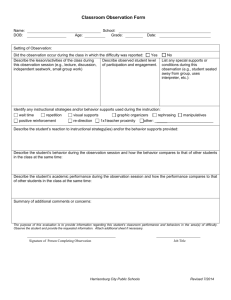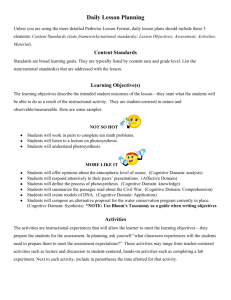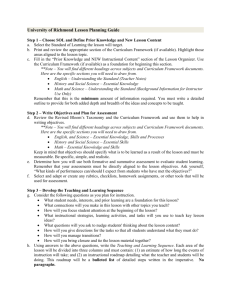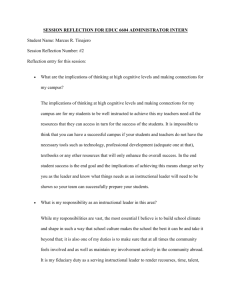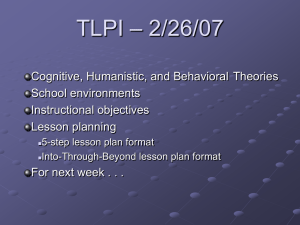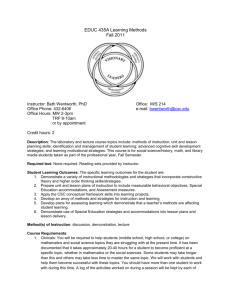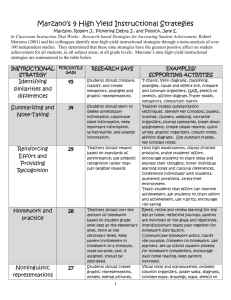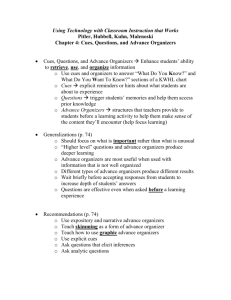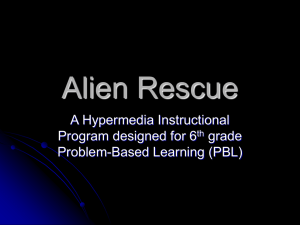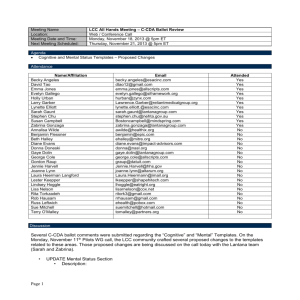Topical Study Guide - NIU College of Education
advertisement
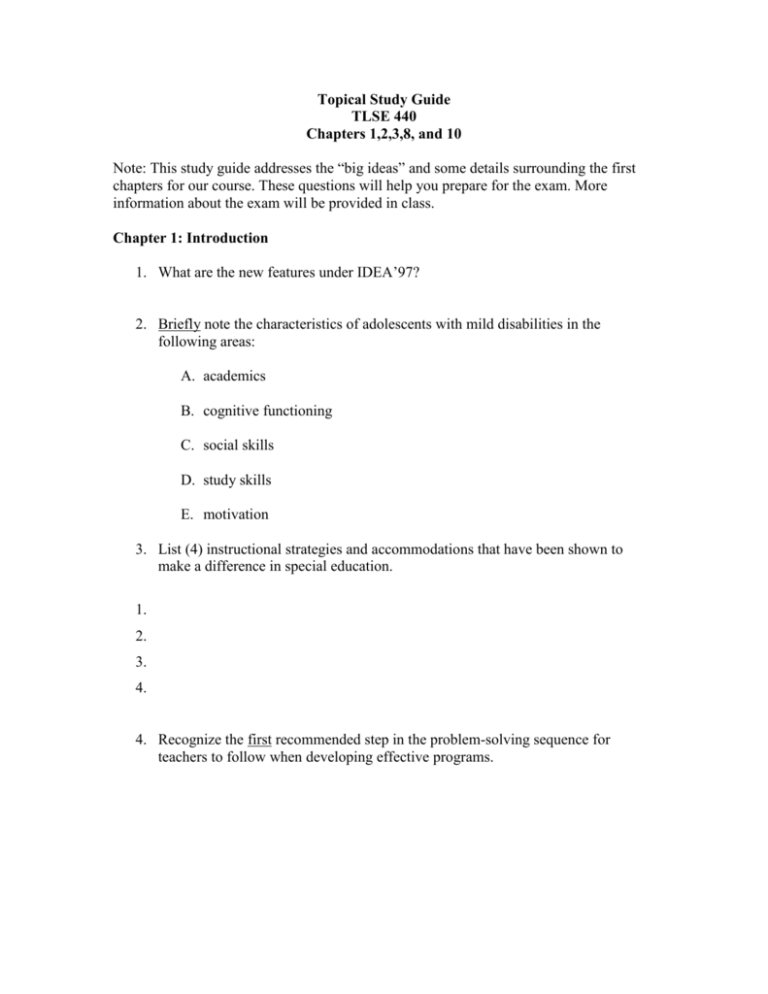
Topical Study Guide TLSE 440 Chapters 1,2,3,8, and 10 Note: This study guide addresses the “big ideas” and some details surrounding the first chapters for our course. These questions will help you prepare for the exam. More information about the exam will be provided in class. Chapter 1: Introduction 1. What are the new features under IDEA’97? 2. Briefly note the characteristics of adolescents with mild disabilities in the following areas: A. academics B. cognitive functioning C. social skills D. study skills E. motivation 3. List (4) instructional strategies and accommodations that have been shown to make a difference in special education. 1. 2. 3. 4. 4. Recognize the first recommended step in the problem-solving sequence for teachers to follow when developing effective programs. 5. Review the “big ideas” about the following program options: 1. Functional Skills Approach 2. Work Study Program Approach 3. Basic Skills Approach 4. Tutorial Approach 5. Learning Strategies Approach 6. Co-teaching Approach 6. What are 3 (of the 4) “pressure realities” faced by general educators at the secondary level? 1. 2. 3. Chapter 2: Adolescence 1. Be able to recognize the contributions associated with the following theorists and their theories: 1. Erickson/Stage of Man 2. Piaget/Cognitive Theory 3. Kohlberg/Morality Theory 4. Elkind/Egocentrism 5. Sullivan/Interpersonal Development 6. Bandura/Cognitive Theory Chapter 3: Secondary-Level Students 1. What is the greatest predictor of academic and social failure in the public school? 2. What does comorbidity mean? 3. In the area of behavior characteristics, what is one of the most serious emotional issues facing young adults today? 4. What preventive/proactive and on-going supports are suggested in order to inhibit depression? 5. What are 4 forewarnings of suicide? 1. 2. 3. 4. 6. Be able to recognize the interventions educators can do to address issues regarding juvenile delinquency (p. 76). 7. What factors was a strong predictor of chemical dependency in a study by Karacostas and Fisha (1993)? Chapter 8-Cognitive Strategy Training and Study Skills Instruction 1. Review the demands placed on today’s secondary students. 1. 2. 3. 4. 2. What were the (2) most common approaches to remediating students’ learning difficult in the past? 1. 2. 3.Summarize the advantages of strategy training approaches. 4. What does metacognition refer to? 5. What 3 components are associated with the pretest stages in the strategies instructional approach? 1. 2. 3. 6. Why do teachers rely more on informal assessments in learning strategies (or study skills)? 7. Recognize the 4 guidelines for making strategies relevant to students. 1. 2. 3. 4. 8. Recognize the 10 steps in the instructional procedure for teaching learning strategies. 1. 2. 3. 4. 5. 6. 7. 8. 9. 10. 9. What are guided notes? 10. Which is the most difficult format for note taking? 11. Recognize the 6 “tips” that are suggested that may help students generalize strategies. 1. 2. 3. 4. 5. 6. Chapter 10: Content Area Instruction 1. Review the SCREAM acronym. 2. Be able to note any 3 interventions teachers can make under the heading “textbook modifications” 1. 2. 3. 3. Where should students begin reading a chapter? 4. What is an advance organizer? 5. Why are advance organizers important? 6. What is a graphic organizer? 7. What teacher behaviors must accompany graphic organizers for them to be effective? 8. Review “best practices” regarding study guides (pp. 312-313). 9. What is a mnemonic? 10. What is the difference between 1. accommodations 2. modifications


